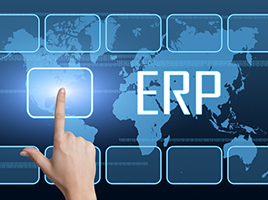Preparation for a cloud ERP implementation, also known as ‘system planning round’, represents a first-principle when if comes to any successful technical implementation. While there are some digital platforms that require little or no effort during a system spin-up, unfortunately the setup of an ERP system doesn’t happen to be one of them.
There are a host of reasons for this assertion, but most of them come down to the fact that user confidence must be paramount once an enterprise switch is flipped, and the system begins to wind around and through most, if not all, internal business processes. As a result, we thought we’d discuss some of the more critical prep steps in order to give you a better sense of what you’ll have to think about in the real world.
Here are the big five:

1. Soup-to-nuts process analysis
The implementation of a cloud ERP system offers an opportunity to catalog and investigate business processes from the ground up, since by their nature, these elements involve nearly every critical element within an enterprise. This step is an important way to make the relationship between a new virtual system and its business customer more effective. At the same time this step offers a clear opportunity to discard, alter and/or refine operational processes that may not be as useful as they might be, prior to migrating a company’s internal business infrastructure to a virtual environment.
2. Set up an appropriate reporting structure
This planning step applies to enterprise reporting and how the company does and doesn’t utilize information made available by a new ERP. Legacy reports may be needed in the case of a new cloud system, so investigating this will offer a way to clear away some of the deadwood. However, since cloud ERP offers a direct advantage in terms of global transparency, the planner should also immediately prepare to expand his/her reporting catalog as an advantages emerge.
3. Conduct a security needs analysis
Given today’s data security climate, today’s ERP systems demand more rigorous requirements than previous iterations. Issues of data safeguarding, deeply-granular security protocols, and active and passive protection and recovery systems should be emplaced. In the case of cloud ERP specifically, pay attention to any security process/policy mismatches between your legacy platform and the cloud system you’re moving to; the latter typically involves baked-in security processes that may or may not be compliant.
4. Cleanse any out-of-date or unwanted data
Initiating a clean ERP system offers a great way to investigate and re-validate one’s complete datastore, prior to migrating information from and old to a new cloud platform. This evolution may include mundane issues, such as removing obsolete records, or eliminating duplicate records, to more complex areas of focus such as data channel relationships between local to remote datastores. At the end of the day, the effort allows the at-large enterprise a chance to take a beat, and ensure that all data records and resolved information elements are entirely stable and ready to be migrated to the cloud.
5. Conduct an infrastructure analysis
While it may seem that all the planning power should apply to the cloud ERP platform itself, a company’s underlying legacy infrastructure should still be validated prior to implementation. Enterprise operators shouldn’t underestimate the importance of this setup since a virtually-hosted software system will only be as effective as the local environment allows.
Granted, there a number of other more important focus areas regarding this kind of planning round, but ‘The Big Five’ should get you started on a fair degree of confidence. Nevertheless, the end-goal of all processes must be oriented to ‘what the enterprise wants’ at a business level; not ‘what the salesperson would like’. So if you’re mindful of that caveat alone you’ll be a long down the road of getting the system you want, when you want it, and how it behaves once you spool up for the first time.



